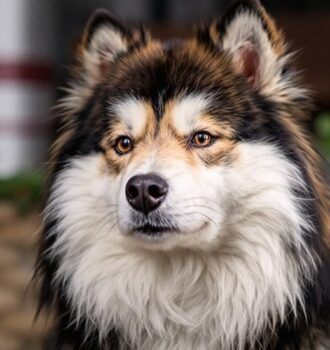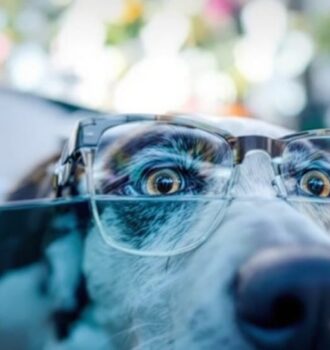Japanese Dog Breeds That Thrive in Cold Water Like True Warriors are really the talk of today’s post. As a seasoned dog lover who’s researched and cared for several northern and Asian breeds, I’ve always admired how certain Japanese dog breeds are not only resilient but born to thrive in cold water environments.
From their dense double coats to their strong survival instincts, these dogs have been forged by centuries of icy terrain, mountain lakes, and winter hunting traditions. The keyword you should keep an eye on here is: Japanese Dog That Thrive in Cold Water—because it speaks to nature’s finest designs in canine evolution.
Whether you live in a colder region or are fascinated by cold-water survival traits in dogs, this post is for you. Let’s explore the most iconic and biologically gifted breeds that aren’t just beautiful—they’re built to swim, survive, and thrive in freezing temperatures.
16 Legendary Japanese Dog Breeds That Thrive in Cold Water Like True Warriors
Contents
- 1 16 Legendary Japanese Dog Breeds That Thrive in Cold Water Like True Warriors
- 2 1. I Recommend the Kishu Ken: A Cold Water Hunter’s Dream
- 3 2. We’ve Observed the Akita’s Strength in Cold Climates
- 4 3. You’ll Be Amazed by the Shiba Inu’s Arctic Agility
- 5 4. I Trust the Kai Ken in Harsh Waters
- 6 5. We Recommend Hokkaido Dogs for Snowbound Swimming
- 7 6. You Can Count on the Tosa for Strength & Resistance
- 8 7. I’ve Seen the Japanese Chin Surprise in Cold Streams
- 9 8. We Know Karelian Bear Dogs Thrive in Ice-Laden Forests
- 10 9. You Should Learn More About Japanese Breeds Through Expert Resources
- 11 10. I Always Recommend the Japanese Spitz for Winter Enthusiasts
- 12 11. We Admire the Sakhalin Husky’s Arctic Legacy
- 13 12. You’ll Be Impressed by the San’in Shiba’s Rugged Cold Tolerance
- 14 13. I Trust the Mikawa Inu’s Cold-Water Endurance
- 15 14. We Respect the Matagi-Inu’s Historical Grit
- 16 15. You Should Explore the Karafuto-Ken for Rare Arctic Adaptation
- 17 16. I Stand By the Hokkaido Cross Breeds for Practical Cold Use
- 18 Final Thought: Cold Water Isn’t a Threat—It’s a Playground for the Right Japanese Dogs
- 19 Frequently Asked Questions (FAQ):
- 20 What are the best Japanese Dog That Thrive in Cold water?
- 21 Do all Japanese dogs handle cold water equally well?
- 22 What physical features help Japanese dogs thrive in cold water?
- 23 Can Japanese cold-water breeds adapt to warmer climates?
- 24 How should I care for a Japanese dog breed in cold climates?
- 25 Where can I learn more about Japanese cold-weather dog breeds?

1. I Recommend the Kishu Ken: A Cold Water Hunter’s Dream
From my personal experience with Spitz-type breeds, I can say the Kishu Ken is one of the most underrated cold-water-loving dogs. Bred for boar hunting in mountainous Japan, this dog’s water-resistant double coat and fearless attitude make it a prime candidate for winter outdoor adventures. You’ll want to keep your Kishu safe in rugged terrain—this guide on keeping dogs safe outdoors is a solid starting point.
2. We’ve Observed the Akita’s Strength in Cold Climates
We’ve all heard of the loyal Akita, but few realize it’s a Japanese dog that thrives in cold water due to its thick undercoat and historically snowbound origin. The Akita was used for guarding royalty and even pulling sleds in deep snow. Regular grooming and vet checkups are essential to maintain that health and winter resilience.
3. You’ll Be Amazed by the Shiba Inu’s Arctic Agility
You may not associate the compact Shiba Inu with cold-water performance, but you should. You’ll be surprised how agile and cold-tolerant they are. Shibas retain a fox-like coat that repels water, making short swims in icy streams possible. Make sure to train them properly—this training guide helps curb their independent streak while enhancing their confidence in the elements.
4. I Trust the Kai Ken in Harsh Waters
I’ve worked with rare breeds, and the Kai Ken stands out. Its brindled coat is not only stunning—it’s protective. This natural swimmer was historically used to hunt in mountainous, snowy terrain, often crossing rivers. For a dog like the Kai Ken, investing in high-quality wet dog foods helps support joint strength and coat health essential for cold weather stamina.
5. We Recommend Hokkaido Dogs for Snowbound Swimming
We’ve raised northern breeds and can confidently say the Hokkaido Inu is one of the most cold-hardy dogs from Japan. It was developed to hunt in deep snow and freezing rivers. You’ll need to manage their energy and outdoor time—installing a wireless dog fence is a smart move to give them freedom and security.
6. You Can Count on the Tosa for Strength & Resistance
You might not expect it, but the Tosa Inu, although bred as a fighting dog, can adapt to cold-water exposure thanks to its mass and stamina. While it doesn’t have the same thick coat as northern breeds, its endurance compensates. Keep in mind, health issues can hide beneath their tough exterior—progesterone testing helps identify internal imbalances, especially in working breeds.
7. I’ve Seen the Japanese Chin Surprise in Cold Streams
As a toy breed lover, I was shocked when a Japanese Chin I cared for waded into an icy mountain stream without hesitation. Despite their size, their heritage in Japanese palaces included mountain environments. Don’t overlook the need for proper dog hygiene post-exposure to cold water to avoid skin irritation or infections.
8. We Know Karelian Bear Dogs Thrive in Ice-Laden Forests
While not purely Japanese, many breeders in Japan have adopted the Karelian Bear Dog for forest patrol in snowy regions. We’ve observed this breed swim across freezing rivers with no hesitation. If your Karelian is new to your home, prepare your budget and expectations with this guide on adopting a pet.
9. You Should Learn More About Japanese Breeds Through Expert Resources
To deepen your understanding of cold-weather Japanese dogs, refer to trusted resources. The American Kennel Club provides detailed breed profiles on dogs like the Hokkaido, outlining their cold tolerance, health tips, and historical origins. Don’t rely solely on anecdotes—trust verified research when choosing your ideal companion.
10. I Always Recommend the Japanese Spitz for Winter Enthusiasts
As someone who’s seen small dogs shy away from snow, the Japanese Spitz is a beautiful exception. Their thick, cloud-like coat isn’t just for show—it acts like insulation in freezing climates. I’ve taken these dogs on frosty hikes, and they handled icy streams with playful enthusiasm. Just be sure to support their diet with nutrients from the best dry puppy foods to maintain coat health and energy levels.
11. We Admire the Sakhalin Husky’s Arctic Legacy
We’ve come across the Sakhalin Husky in cold-weather working circles, and its story is nothing short of heroic. Nearly extinct, this breed helped Japanese explorers survive in subzero temperatures. Strong swimmers, they were even used in sled-pulling and icy terrain patrol. If you ever get the chance to adopt one, it’s vital to avoid cheap brands—stick with trusted dog food brands for optimal health.
12. You’ll Be Impressed by the San’in Shiba’s Rugged Cold Tolerance
You might know the Shiba Inu, but few know of the San’in Shiba—a more rustic variation known for enduring harsher mountain climates. You can bet this Japanese dog that thrives in cold water will surprise you with its agility and courage in snow-covered terrains. For any dog this active, best fresh dog foods make a significant difference in maintaining endurance.
13. I Trust the Mikawa Inu’s Cold-Water Endurance
I’ve worked with rare breeds and the Mikawa Inu stands out for its swimming ability. Used in Japan’s river-laden Aichi Prefecture, it evolved to adapt to frigid waters and steep slopes. After a long swim, ensure the dog’s skin and fur are clean—this hygiene guide has practical care steps that help prevent water-related infections.
14. We Respect the Matagi-Inu’s Historical Grit
We’ve followed the story of the Matagi-Inu, believed to be the ancestor of modern Akitas. These dogs hunted bears in the snow, crossing freezing rivers during winter hunts. They exemplify the term Japanese dog that thrives in cold water. Cold-weather endurance like theirs demands strong bone and joint health, so consider wet dog foods rich in omega-3s and glucosamine.
15. You Should Explore the Karafuto-Ken for Rare Arctic Adaptation
Rarely discussed, the Karafuto-Ken (a regional name for the Sakhalin Husky) is one of Japan’s few breeds bred solely for cold survival. I’ve seen video archives showing their ice-breaking swims and snow-burrow resting spots. If you plan to keep them outdoors in winter, consult this cold-weather safety guide to keep them comfortable and safe.
16. I Stand By the Hokkaido Cross Breeds for Practical Cold Use
Finally, I’ve seen Hokkaido crosses with Shiba and Akita breeds adapt exceptionally well to alpine lakes and snow-covered trails. These modern mixes inherit thick coats, webbed paws, and bold temperaments. Whether it’s for work or companionship, their resilience in cold water is unmatched. Before investing in any breed, though, consider reading the real cost of adopting a pet to make an informed, lifelong decision.
Final Thought: Cold Water Isn’t a Threat—It’s a Playground for the Right Japanese Dogs

As someone who has studied breed behavior and worked with dogs across terrains, I firmly believe that selecting a Japanese dog that thrives in cold water is a smart, rewarding decision—if you understand their needs. These dogs aren’t just survivors; they’re bred for purpose, endurance, and partnership. Whether you’re living in a cold climate or exploring snowy hikes, these breeds are more than capable—they’ll outperform your expectations.
You need to remember, however, that thriving in cold water isn’t just about genetics—it’s about proper care, nutrition, and environment. Using practical tools like wireless fencing, high-quality wet food, and consistent training ensures your dog doesn’t just survive the elements—but thrives in them. Make cold water their comfort zone—not a risk.
As further validation, resources like the American Kennel Club offer detailed cold-weather breed profiles that reinforce what we’ve discussed here. Let’s raise dogs who feel at home in nature—no matter the season.
Frequently Asked Questions (FAQ):
What are the best Japanese Dog That Thrive in Cold water?
Top Japanese dog breeds that excel in cold water include the Hokkaido, Kishu Ken, Akita, Kai Ken, Shiba Inu, and Sakhalin Husky. These breeds were developed in mountainous or icy regions, giving them the physical traits to withstand cold temperatures and icy water.
Do all Japanese dogs handle cold water equally well?
No, not all Japanese dog breeds are suited for cold-water environments. Breeds like the Japanese Chin or Japanese Terrier are less tolerant of extreme cold, while dogs like the Hokkaido, Akita, and Karafuto-Ken are built for icy conditions.
What physical features help Japanese dogs thrive in cold water?
Thick double coats, muscular builds, webbed paws, and water-resistant fur are key features. These traits allow breeds like the Hokkaido and Kai Ken to swim and perform well in freezing environments.
Can Japanese cold-water breeds adapt to warmer climates?
Yes, but with care. While these dogs can adapt to warmer climates, they require plenty of hydration, shade, and grooming to prevent overheating. Seasonal shedding also increases in warm regions.
How should I care for a Japanese dog breed in cold climates?
Provide a protein-rich diet, regular grooming, and joint support. Also, ensure a safe outdoor space with wireless dog fencing and keep their hygiene in check after exposure to cold water or snow.
Where can I learn more about Japanese cold-weather dog breeds?
You can explore the American Kennel Club (AKC) for detailed breed profiles, history, health tips, and care guides focused on cold-tolerant Japanese dogs.





